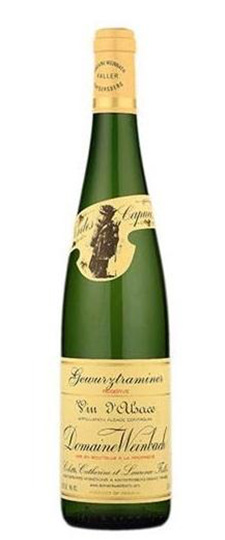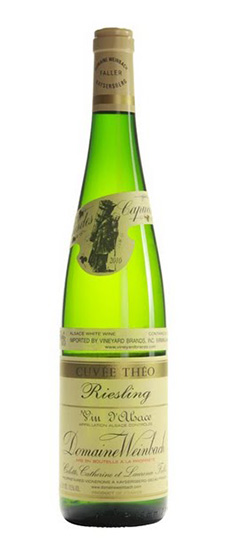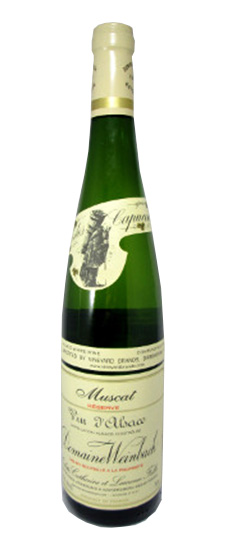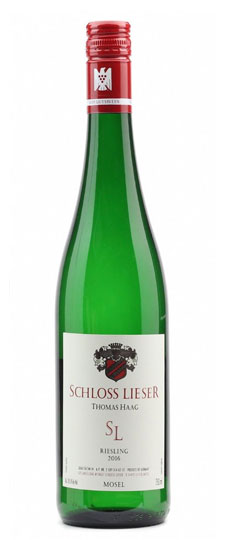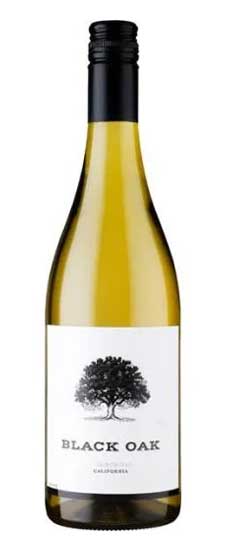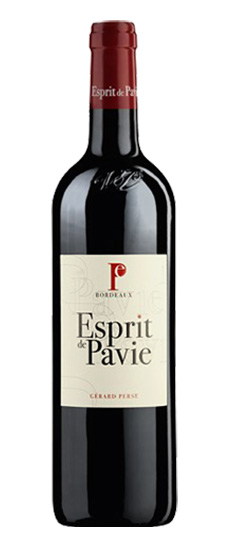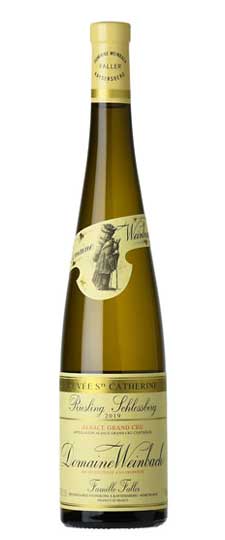Wine Score
Wine Advocate 90 points (Mar 2017)
Mainly sourced in the Clos but also in the Schlossberg, the 2015 Muscat Reserve is a blend of 70% Ottonel and 30% Muscat d’Alsace that was picked on 16 and 28 of September. ”The Muscats were tricky,” says Catherine. ”We had to pick them twice, because some of the grapes were not fully ripe at the time of the first picking.” The wine has a very bright color and is still somewhat reduced on the nose due to sulfur, but indicates ripe white fruit aromas along with lovely floral flavors. On the palate, this is a mouthful of full-bodied, aromatic, elegant and refreshing Muscat that is lifted by a lovely piquant acidity. The finish is pure, dry, well structured and aromatic. This is another excellent wine with food, vegetables mainly and white meat.
Vinous 90 points (Mar 2017)
Pale straw-green. Hints of grapefruit, elderberry and anise, plus a curious note of minty marshmallows on the nose. Thicker than usual, yet even more vibrant, this spreads out impressively to coat the mouth, leaving a floral perfume behind. A blend of 70 percent Muscat Ottonel and 30 percent Muscat d’Alsace, this will prove ideal with a mint-accented tabbouleh, as well as classic shellfish, artichoke and asparagus dishes. Only 3,500 bottles made.
Grape Variety
Muscat (Moscato) Wine
Muscat (Moscato in Italy, Moscatel in Spain and Portugal) is the name of one of the oldest and most widespread grape families in the world. The grapes we know today as Muscat – which are believed to have originated in the Middle East – have been used in winemaking since the times of the ancient Greeks. However, a long history brings with it an equally long list of synonyms, mutations and crossings.
There is no one “true” Muscat, but rather a great many incarnations, each with its own regional nuance and character. Muscat Blanc à Petits Grains (Moscato Bianco in Italy) is the oldest and most highly valued of the Muscat family. It is grown throughout the Old and New Worlds in a range of styles as diverse as its synonyms. The most notable wines made from Muscat Blanc à Petit Grains are Muscat de Beaumes de Venise, Muscat de Lunel, Clairette de Die and the traditional Vin de Constance wines of Constantia, South Africa. Lesser-known, but often of excellent quality, are the examples produced in Austria’s Wachau region (better known for its crisp, dry Gruner Veltliner).
Muscat Grapes
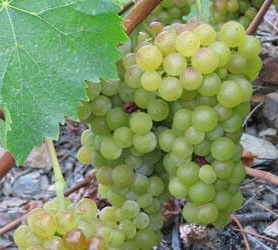 Other notable branches of the family include Muscat of Alexandria, the second-oldest member of the Muscat clan, known for its light and fruity white wines. Muscat Ottonel is pale and ripens early, while Muscat Hamburg is a black grape variety and is often used as a table grape. The colorfully named Moscatos Giallo and Rosa (yellow and pink) both come from northern Italy and are used to make a range of sweet and dry wines.
Other notable branches of the family include Muscat of Alexandria, the second-oldest member of the Muscat clan, known for its light and fruity white wines. Muscat Ottonel is pale and ripens early, while Muscat Hamburg is a black grape variety and is often used as a table grape. The colorfully named Moscatos Giallo and Rosa (yellow and pink) both come from northern Italy and are used to make a range of sweet and dry wines.
The distinctive grapey aroma of Muscat is one of its chief properties, but its versatility also makes it an attractive option for winemakers. Muscat may be produced as dry, medium, sweet, sparkling or even dessert wine, and are also used as table grapes around the world. However, the Muscat family in general has low acidity and is not suited to aging more than about four years (with the exception of fortified Muscat).
As a general rule, Muscat prefers warm climates and thrives in a typical Mediterranean climate. The best examples come from Italy, France, Spain and in Rutherglen, Australia. Italy produces more Muscat than any other country in the form of Moscato d’Asti, made from Moscato Bianco.
Despite their similar names, Muscadelle, Muscadet and Muscardin are not members of the Muscat family.
Synonyms include: Moscato, Moscatel.
Food matches for Muscat include:
- Poached fish fillet with salsa verde (dry)
- Cashew nut curry (sweet)
- Chocolate and custard pie (fortified)
Region
Alsace Wine
Alsace, in the far north-eastern corner of France, stands out from other French wine regions thanks to its strong Franco-Germanic influences. These are the result of the region having switched back and forth between German and French sovereignty in recent centuries – and are evident not only in Alsatian architecture and culture, but also in the wines.
The Alsace region lies between the Vosges mountains and the French border with Germany, marked by the Rhine river. A long, thin region, it measures 115 miles (185km) north to south and just 25 miles (40km) from east to west. The key viticultural areas here are all located on the lower hillsides of the Vosges, on slopes with east and south-easterly aspects.
Alsace
A February morning in Alsace
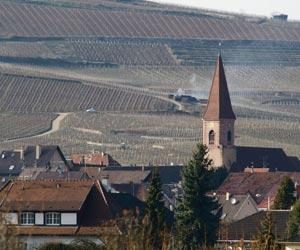 The Vosges play a vital role in defining the region’s terroir; they not only provide protection from the prevailing westerly winds, but also cast a rain shadow over the area, contributing to the low rainfall of its continental climate. They are at their most dense in the southern half of Alsace, where the peaks reach roughly 4600ft (1400m). The glacial activity which created the mountains has also significantly impacted the region’s topography and soils. These vary from sandstone, granite and volcanic rock types in the foothills, to clay-rich limestone and marlstone on the alluvial plains below.
The Vosges play a vital role in defining the region’s terroir; they not only provide protection from the prevailing westerly winds, but also cast a rain shadow over the area, contributing to the low rainfall of its continental climate. They are at their most dense in the southern half of Alsace, where the peaks reach roughly 4600ft (1400m). The glacial activity which created the mountains has also significantly impacted the region’s topography and soils. These vary from sandstone, granite and volcanic rock types in the foothills, to clay-rich limestone and marlstone on the alluvial plains below.
Alsace is the only French wine region to grow significant quantities of Riesling and Gewurztraminer. Both of these varieties are more commonly associated with German wines, and serve as a reminder of Alsace’s history. Pinot Gris, a variety typically marginalized in other French regions as a blending component, is another of the region’s specialties. Sylvaner and Muscat are also traditional Alsace grape varieties, as are Chasselas and Auxerrois although the latter two tend to be used not in single-variety wines but in blends (see Edelzwicker).
Alsace’s wines are produced under three key appellations: Alsace and Alsace Grand Cru for still white wines (both sweet and dry), and Cremant d’Alsace for sparkling. Almost all wine produced in this region fits into one of these three designations.
White varietal wines make up 90% of production here, from the varieties stated above. Key variations in wine styles are marked by their residual sugar levels, which cover the entire sweetness spectrum from bone dry to lusciously sweet. In 1983, the official terms Vendanges Tardives and Selection de Grains Nobles (see French Wine Label Information) were introduced to define and categorize sweet Alsace wines. They remained unique to the region for some time, but are now used in other French appellations such as Jurancon and Coteaux du Layon.
Although significantly outnumbered by white wines, red wines are also made here, mostly from Pinot Noir. Alsace Pinot Noirs are typically lighter-bodied and more rustic than those produced in the variety’s homeland Burgundy, 140 miles (225km) to the south-west. That said, climate change and warmer summers are leading the region’s winemakers to produce noticeably more powerful styles of Pinot Noir.
Dotted along the length of the region are 51 sites marked out as being of particular distinction; the Alsace Grand Cru vineyards.
Producer Notes
About Domaine Weinbach
Domaine Weinbach is a leading wine estate in the Alsace region. It is named after the “wine brook”, a small stream that runs through the main property, which is a former monastery near Kayserberg. The estate is known for its wines made at varying levels of sweetness from Riesling, Pinot Gris, Pinot Blanc, Sylvaner, Gewürztraminer and Muscat.
Domaine Weinbach
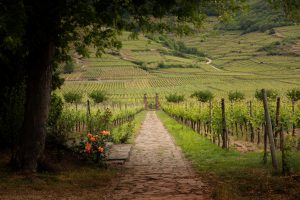 Unusually for the region, Weinbach only uses estate-grown grapes. It has holdings in four nearby Grand Cru vineyards on the slopes of the Weisbach Valley – Schlossberg, Furstentum, Mambourg and Marckgrain. Weinbach also owns the famous 5-hectare (12-acre) monopole, Le Clos des Capucins, which surrounds the cellars just below Schlossberg, and the Altenbourg vineyard adjacent to Furstentum.
Unusually for the region, Weinbach only uses estate-grown grapes. It has holdings in four nearby Grand Cru vineyards on the slopes of the Weisbach Valley – Schlossberg, Furstentum, Mambourg and Marckgrain. Weinbach also owns the famous 5-hectare (12-acre) monopole, Le Clos des Capucins, which surrounds the cellars just below Schlossberg, and the Altenbourg vineyard adjacent to Furstentum.
All of the estate’s 28ha (69 acres) of vineyards have been farmed biodynamically since 2005 and are certified by Ecocert and Demeter. After a gentle, gradual pressing, the juice is slowly fermented in old oak vats using indigenous yeasts.
For several decades the estate was run by Colette Faller and her daughters, winemaker Laurence and sales director Catherine. Laurence died tragically young from a heart attack in 2014, and her mother passed away the following year. Catherine Faller now runs the estate with her sons.

